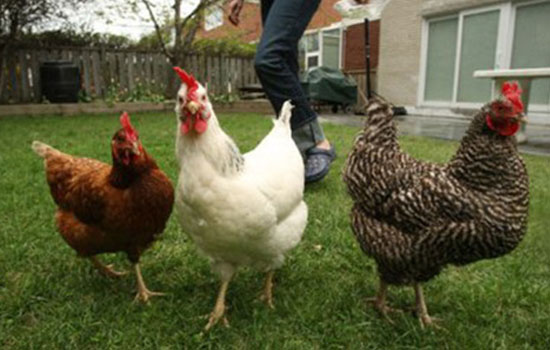The chemical disinfection method is the most widely used. When disinfecting, the type of disinfectant should be selected according to the type of pathogen, the occurrence of the disease, and the feeding method. Because some chemical disinfectants have certain toxicity and corrosive properties, in order to ensure the disinfection effect and reduce the side effects, it must be used according to the conditions required for disinfection and the recommended methods and concentrations on the instructions. The chemical disinfection methods commonly used in chicken farms are immersion disinfection, spray disinfection, and fumigation.
1. Dipping pool disinfection and disinfection objects are mainly small equipment and utensils such as troughs, sinks, drinking fountains and egg trays. In order to improve the disinfection effect, the disinfectant must be immersed in the disinfectant for 30 minutes to several hours.
2. Spray disinfection is the most commonly used disinfection method. The disinfectant is formulated into a certain concentration of solution and sprayed with a sprayer. The chicken house environment and chicken battery cages appliances can be directly spray-sterilized. In practice, chicken disinfection methods are often adopted. Disinfection with chicken is one of the important measures for comprehensive prevention and control of intensive chickens, especially for those chicken farms with poor isolation conditions, strict implementation of “all-in and all-out” management techniques, and frequent occurrence of diseases.
In the high temperature season, the chicken disinfection can not only play the role of sterilization and disinfection, but also significantly reduce the temperature inside the house to achieve the purpose of heatstroke prevention and cooling. Commonly used disinfectants are 0.2%-0.3% peracetic acid, 0.1% benzalkonium, 0.1%-0.2% sodium hypo-oxygenate, 0.03% poisonous killing, and the like. Disinfection with chicken should be carried out in the evening or under the dark light, the spray action should be slow to prevent the fright of the flock.
3. Fumigation and disinfection is usually carried out with 38%-40% formaldehyde solution formalin in combination with potassium permanganate. It is mainly used for thorough disinfection of broiler houses and house houses after transfer. Because formaldehyde is extremely irritating to skin and cat film, it must be disinfected empty and can not be disinfected with chicken. Fumigation and disinfection requires that the house must be sealed. The proportion of the drug is 28 mL of formaldehyde, 14 ml of water and 14 g of potassium permanganate per cubic meter of house. When using, the water should be poured into a corrosion-resistant ceramic container, then add potassium permanganate to stir evenly, then pour formaldehyde, and immediately have formaldehyde vapor out. At this time, the doors and windows should be closed quickly, after 12-14 small open the door and window to open the rear. Layer cage manufacturers believe that it can also be added with formaldehyde, etc., and placed in a container to directly evaporate and disinfect.
